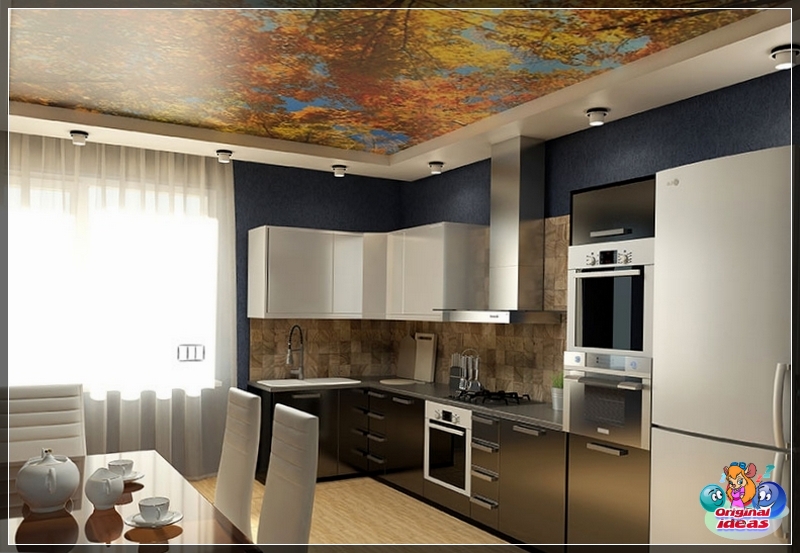
The ceiling in the kitchen has its own specific features. It is susceptible to external factors, and must also fit into the overall design style of the room. When arranging it, a special approach is required. Modern materials make it possible to provide different finishes, differing in cost, appearance and durability. To choose the best option, you should understand their main differences.
Features of the kitchen ceiling
The kitchen is a special room where a comfortable microclimate and aesthetic design must be ensured.
In this case, it is necessary to take into account the presence of external aggressive factors. The kitchen ceiling is most affected by them. Heated air, vapors, combustion products of natural gas, etc., rise upward. d. At the same time, the ceiling is constantly in sight, any dirt and defects immediately catch the eye.
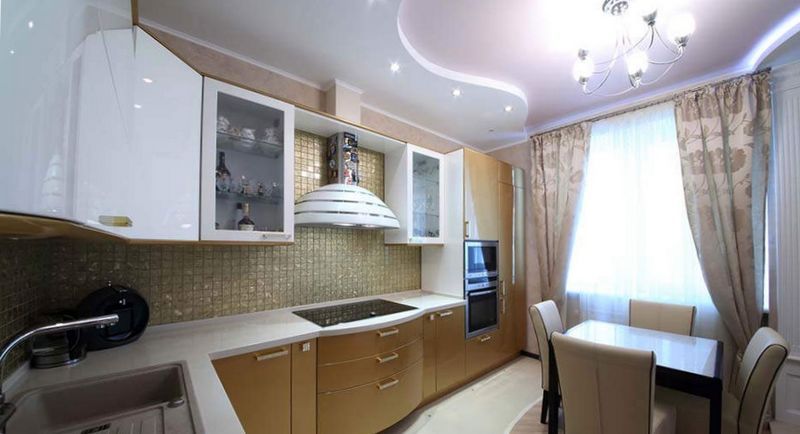
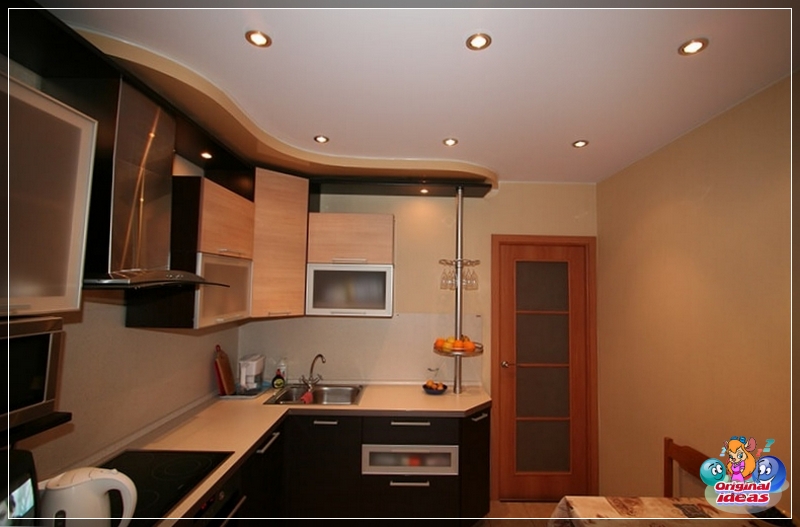
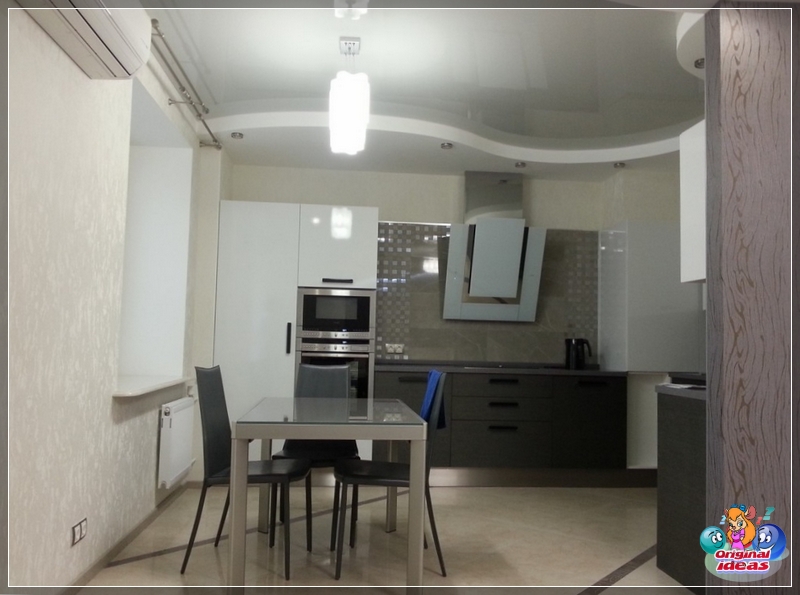
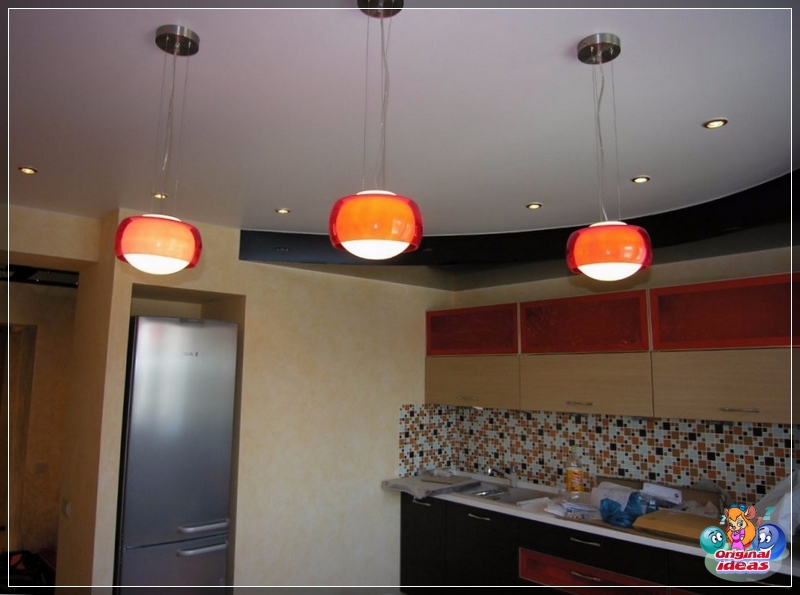
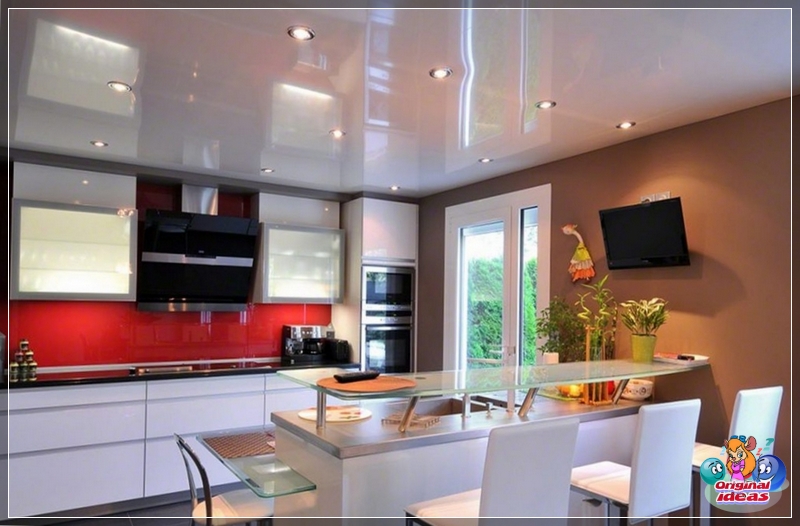
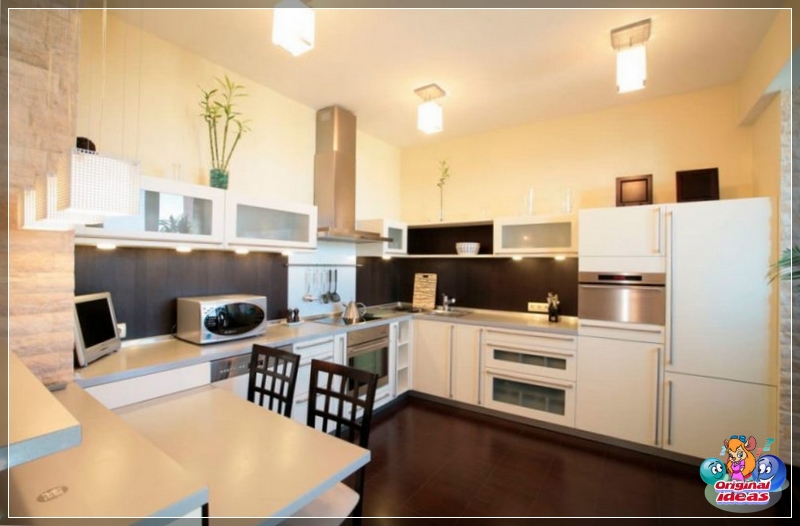

Taking into account the specific conditions for finishing the ceiling, the following requirements are imposed: moisture resistance, resistance to steam and chemically active vapors (fat, soot, alkaline and acidic substances, etc. NS.), resistance to high temperatures and temperature extremes. Food is prepared and taken indoors, and therefore important criteria are parameters such as hygiene, absence of health risks. The ceiling should not actively absorb various contaminants, at the same time, it should be able to be cleaned using conventional methods.
We must not forget about the aesthetics of the kitchen ceiling. The kitchen is often used as a dining room, and the interior of the room should raise your spirits and appetite. In addition, it most often has a small area, and design decisions should take this factor into account.
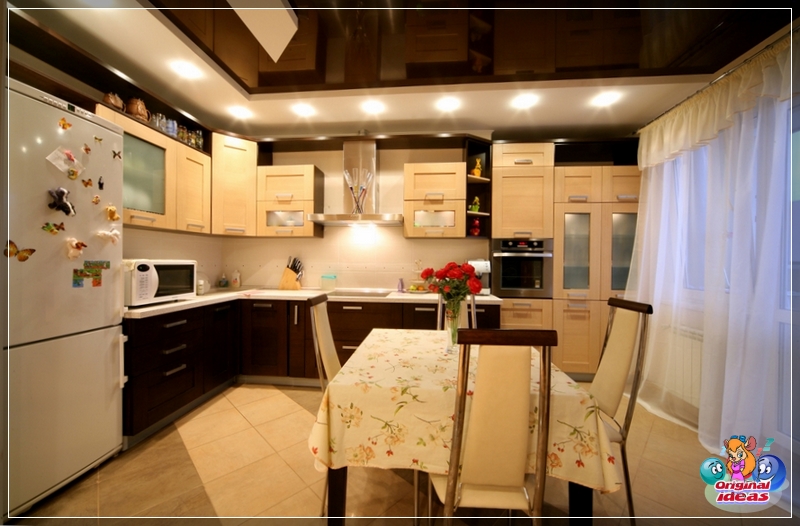






Finishing options
The question of how best to make the ceiling in the kitchen can be solved in different ways. The choice of the optimal method depends on the area of the kitchen, the style of decoration of the room, the preferences of the owner and financial capabilities. For decoration, the color palette, surface structuring, leveling and other techniques are widely used.
Color design principles
Various uses of color are common among design solutions.
The kitchen ceiling can be plain or combine several colors. In principle, its color scheme is limited only by the owner's imagination. The following typical color schemes can be distinguished:
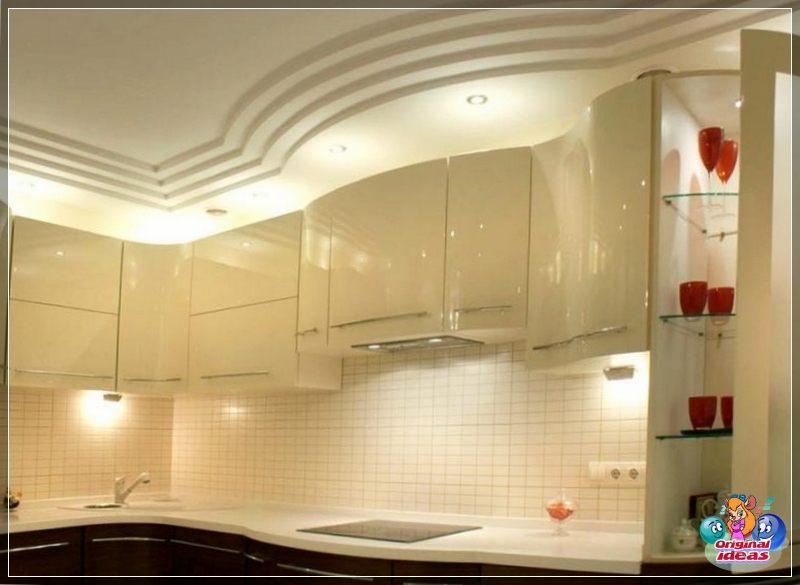
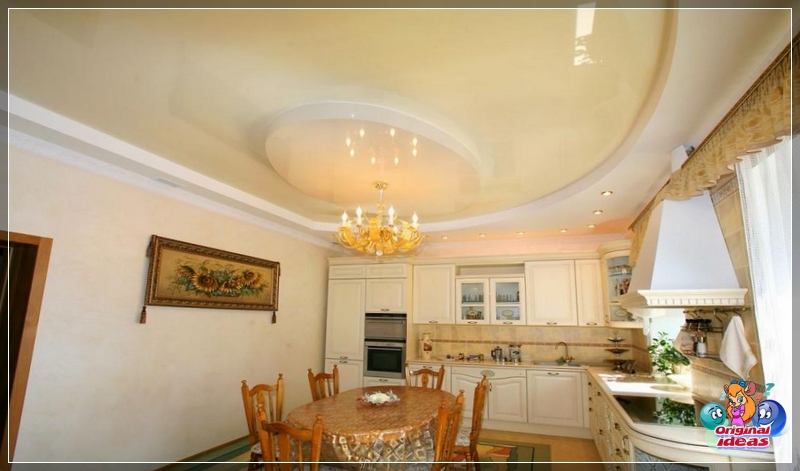
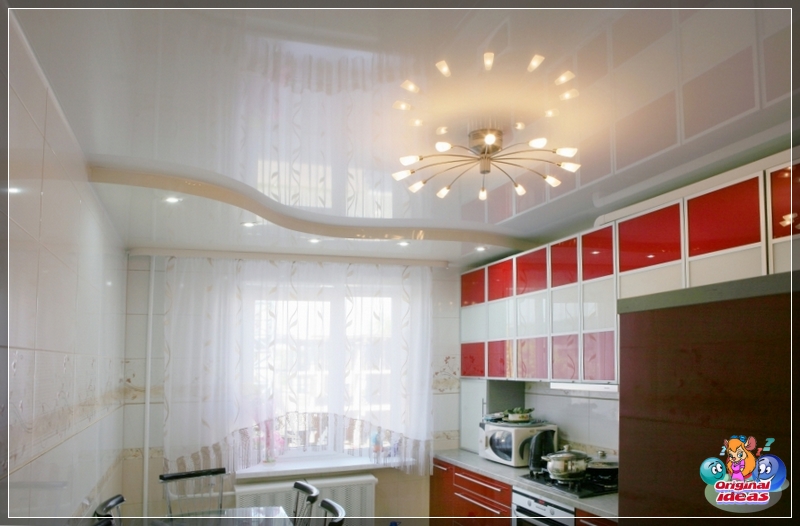
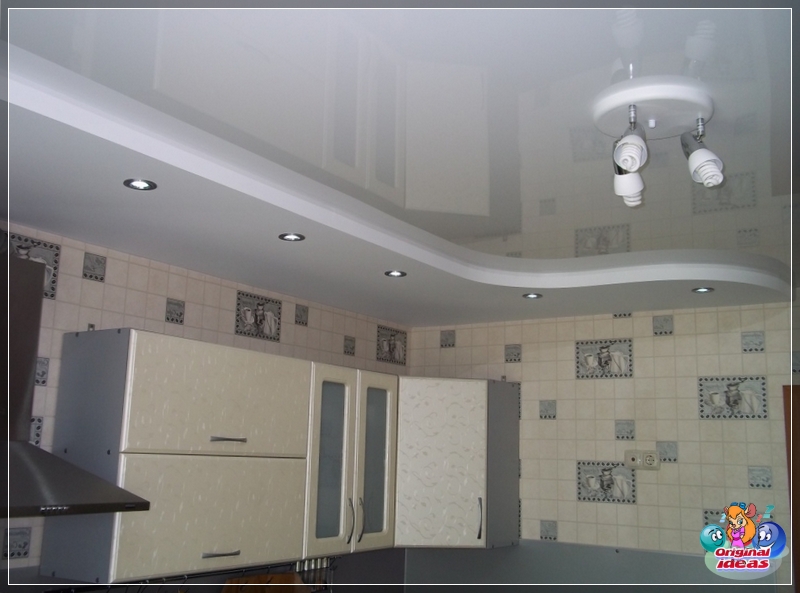
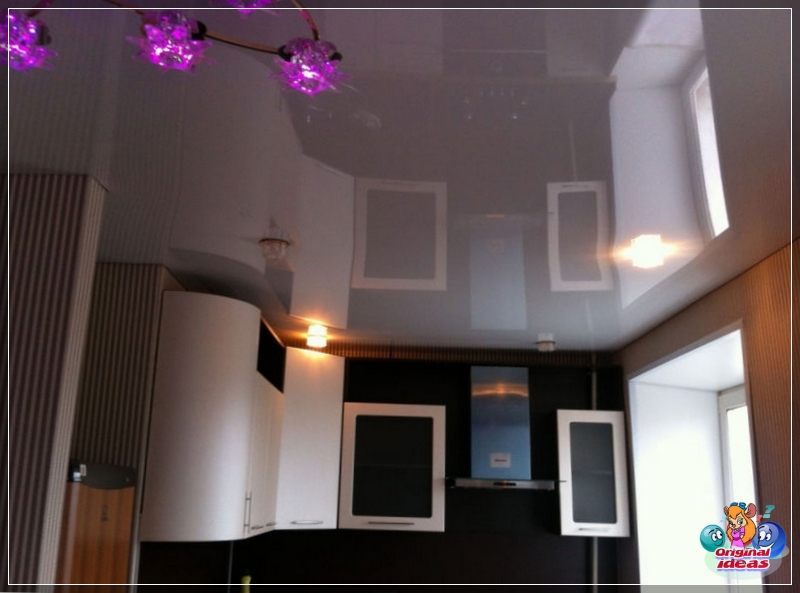
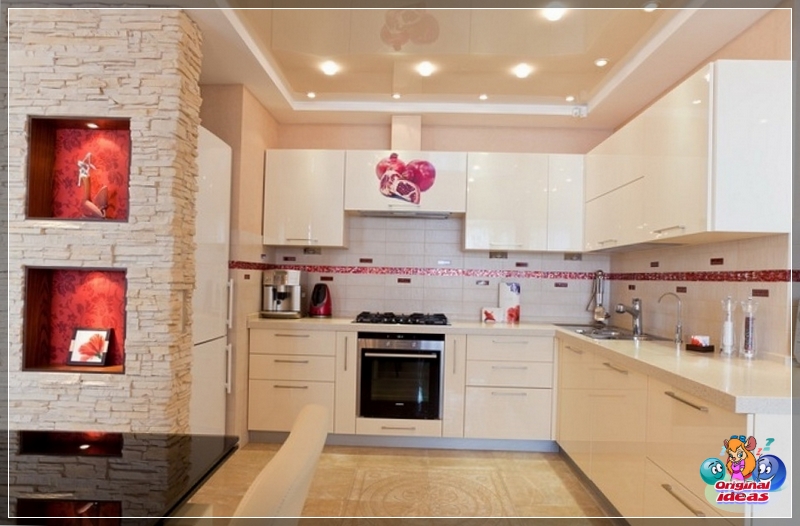
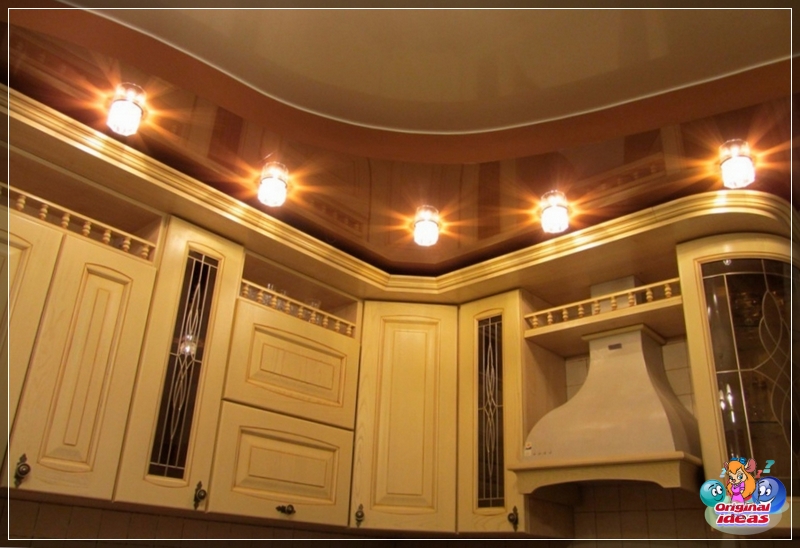
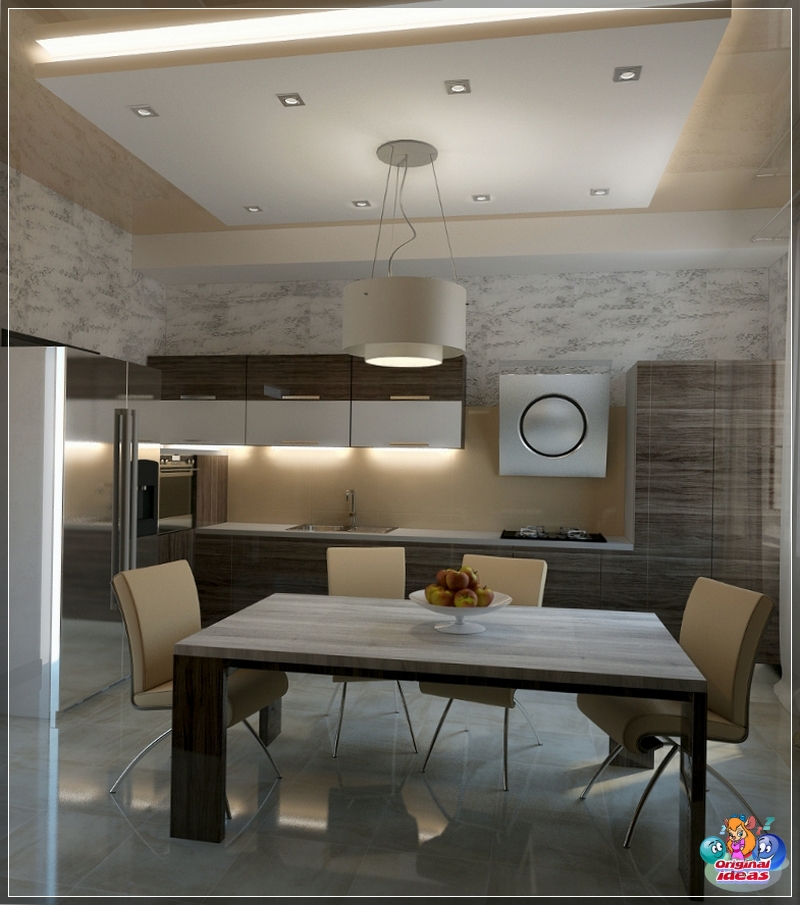
When choosing a ceiling color, it is important to take into account the style of decoration of all rooms, the colors of the walls, floor and furniture.
Surface texture
Depending on the materials used and finishing methods, the following main options for the texture of the surface of kitchen ceilings can be distinguished:
Traditional (simple) ceiling has a flat, smooth surface. However, various relief structures can be artificially created on it - decorative plaster, stucco molding, relief drawings. Artistic ceilings include painting, frescoes or photographs. These design methods are typical for large kitchens.
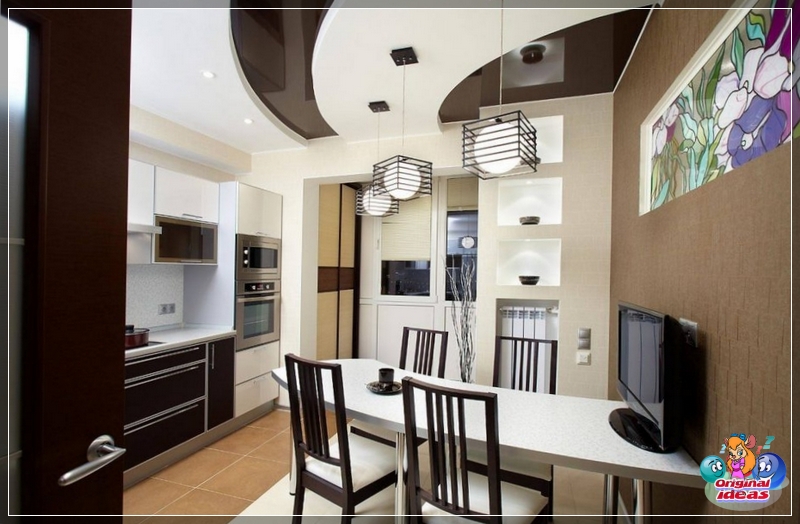


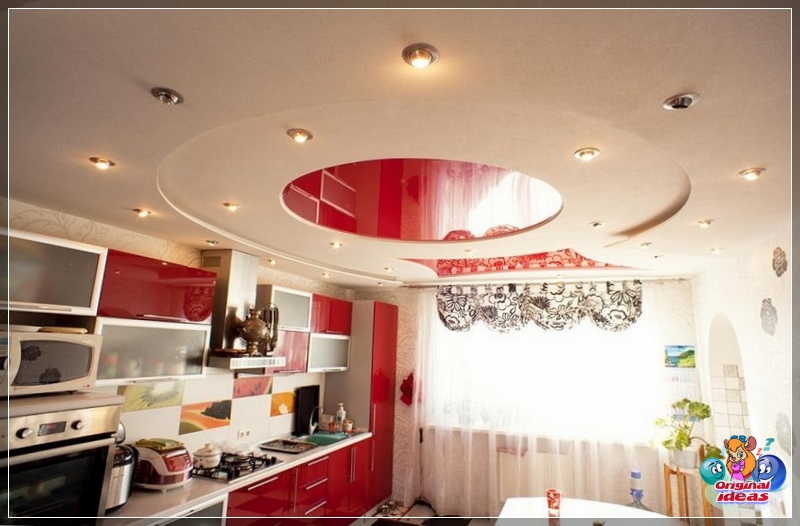

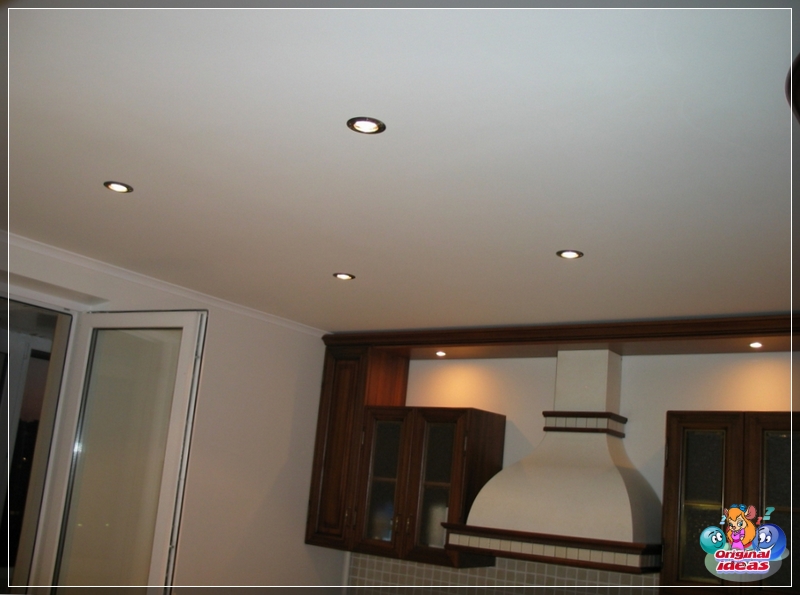
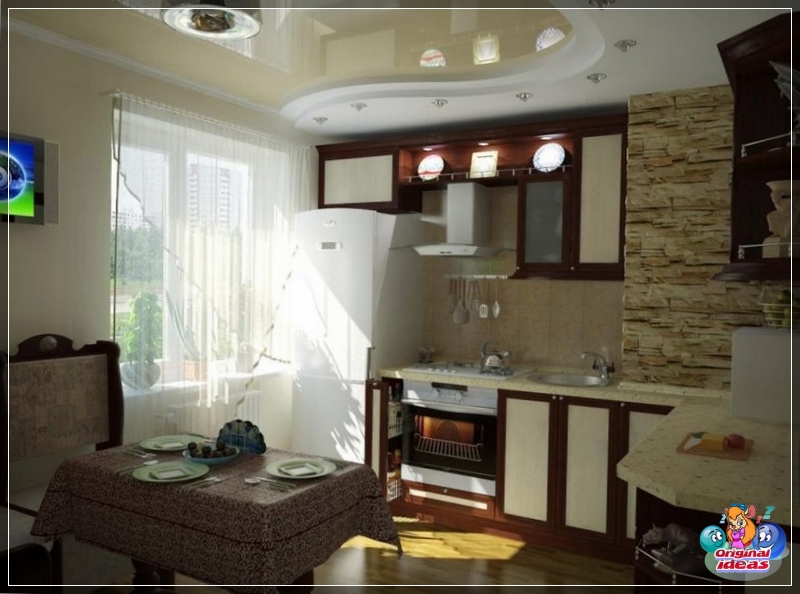
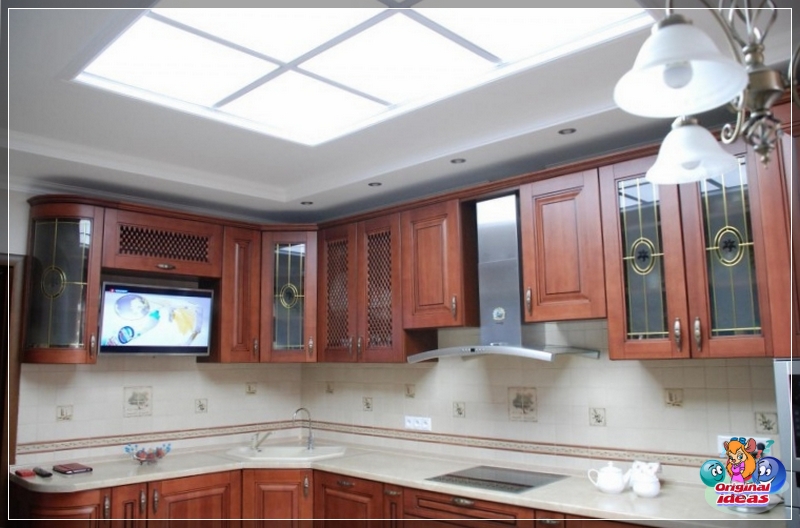
Level division
In small kitchens, traditionally arranging the ceiling means ennobling the surface. This approach requires perfect alignment procedures followed by the application of a decorating layer. Modern trends include the formation of an additional surface (false ceiling), which expands the design possibilities and does not require leveling the ceiling, hiding all its defects.
One- and two-level structures are distinguished (suspended or tensioned). In the first case, the entire ceiling surface is covered with one layer of sheet material or canvas with a gap between it and the ceiling. In a two-level structure, sections are created with a different height for the location of the additional ceiling (second level or tier). So you can arrange "islands" of an unusual shape or a different color, use lighting effects or zone a room.



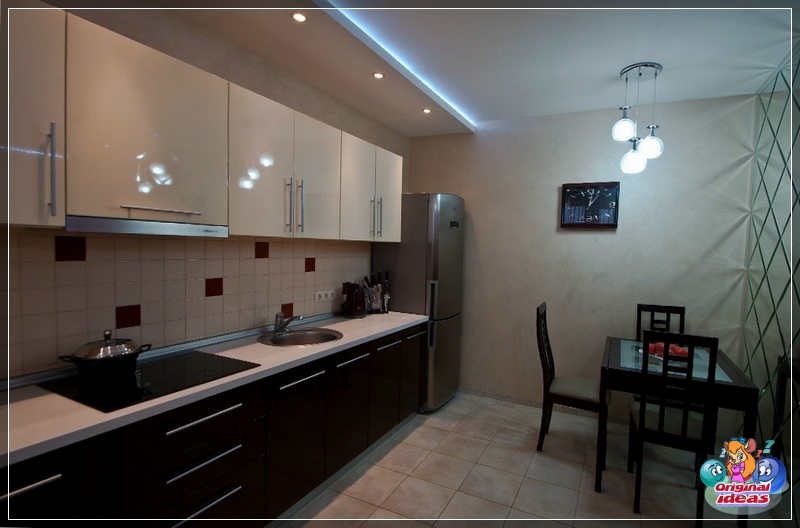
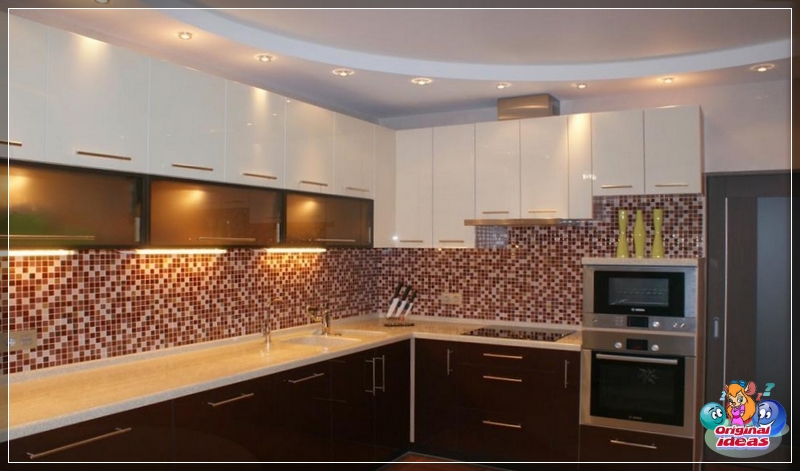
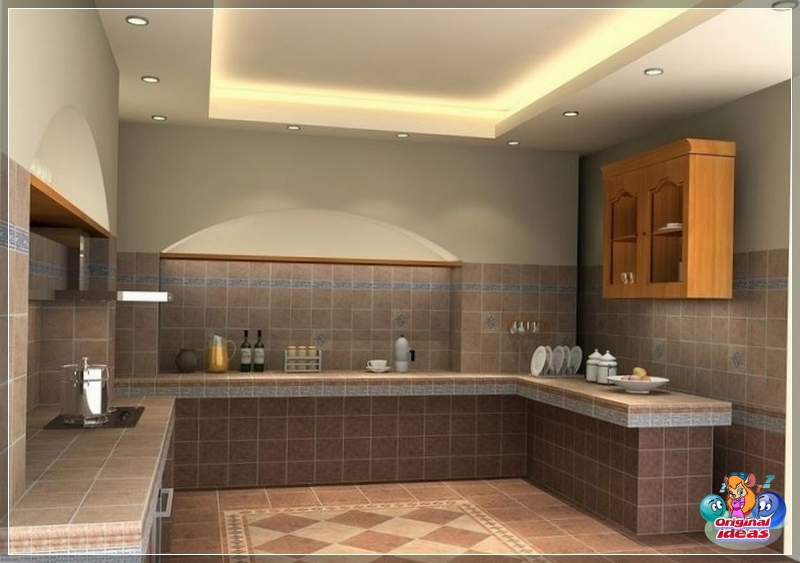
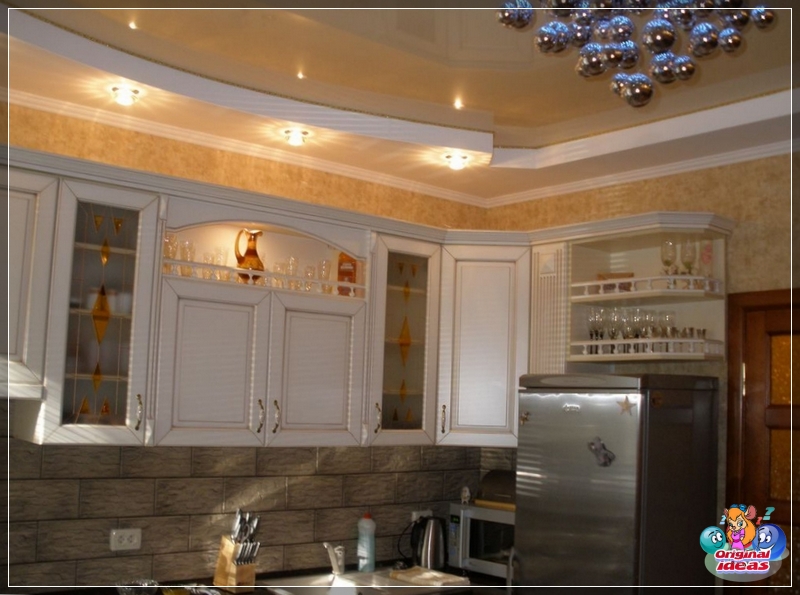
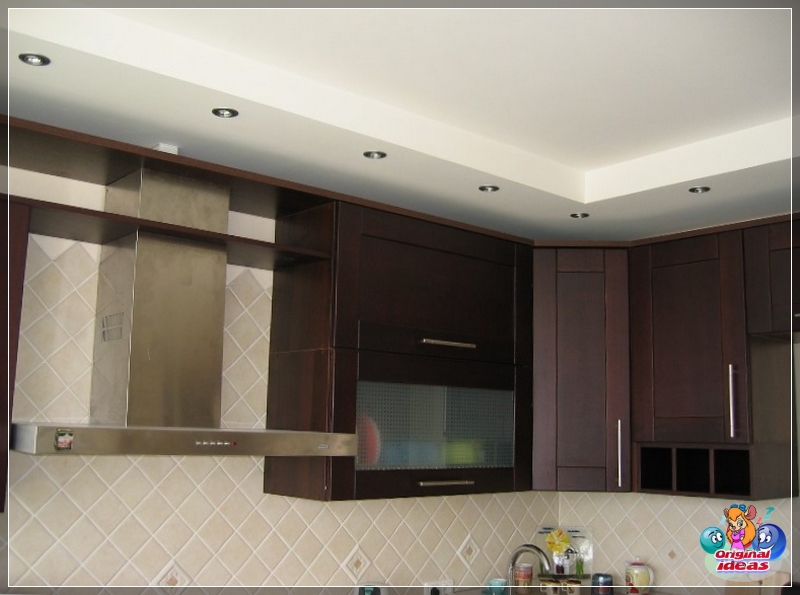
Ceiling formation methods
When the ceiling is being set up in the kitchen, finishing options can be economical, typical (painting, whitewashing, wallpaper), modern (plastic, slatted cladding) or complex structures (suspended and suspended ceiling). At the same time, various materials are used that can provide it with attractiveness, practicality and maintainability.
Whitewash
In the old days, the decoration of the kitchen ceiling was done by whitewashing. Nowadays, this simplest and cheapest method also finds its admirers. For kitchens, it is recommended to use a lime composition with antiseptic properties. It usually forms a white neat ceiling. If desired, you can add "blue" to the whitewash, giving a blue tint. It is possible to use pigments of a different color.
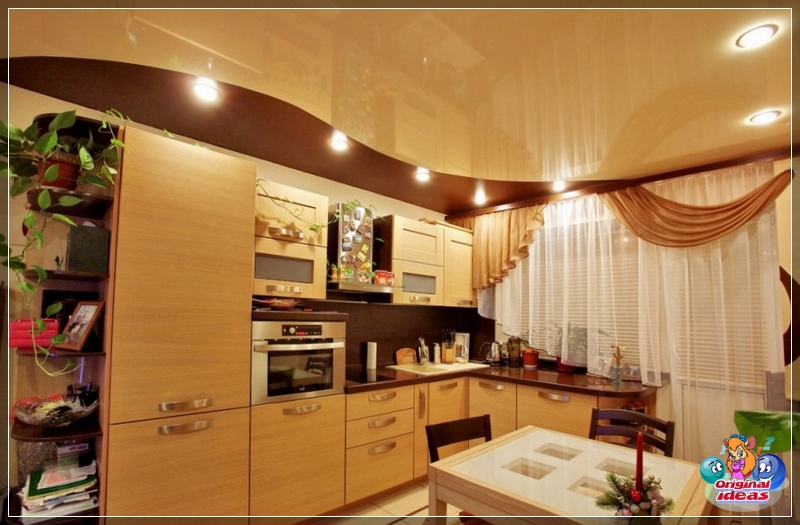
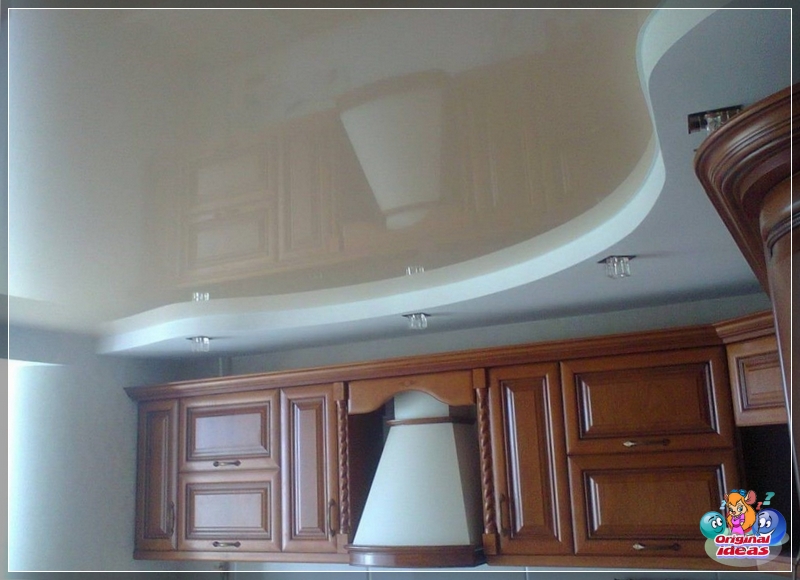
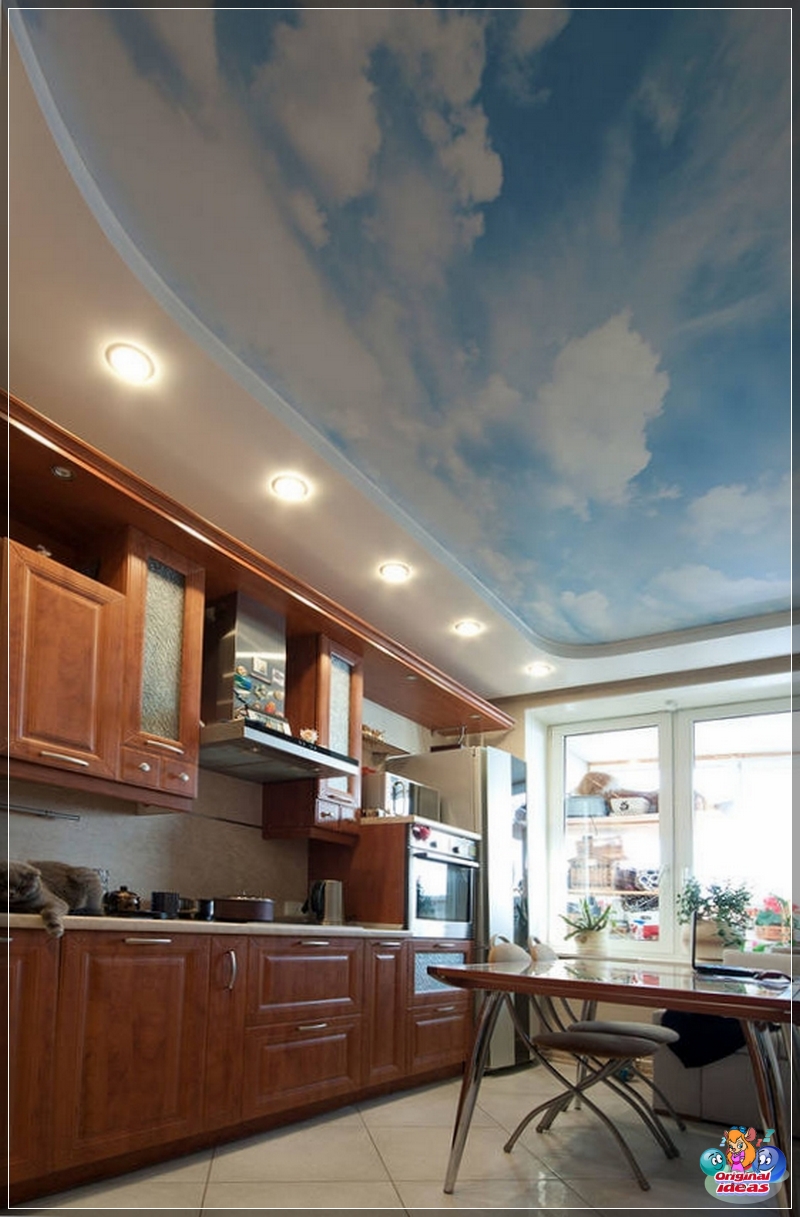
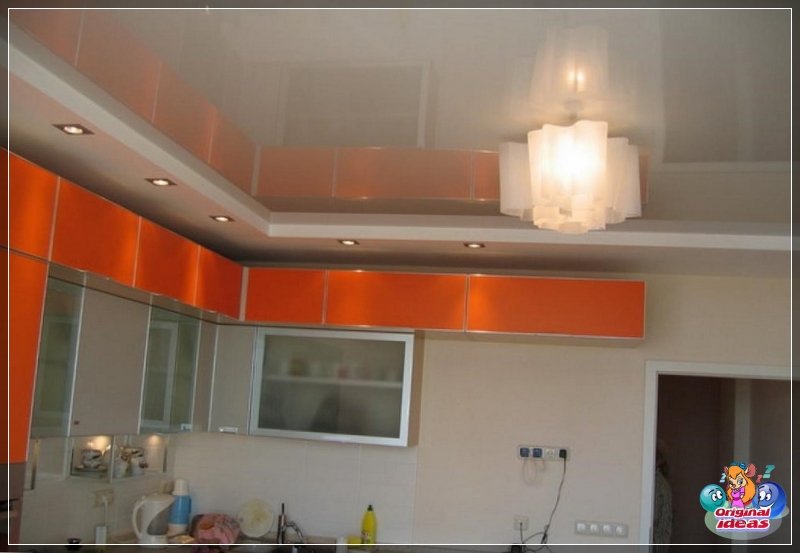
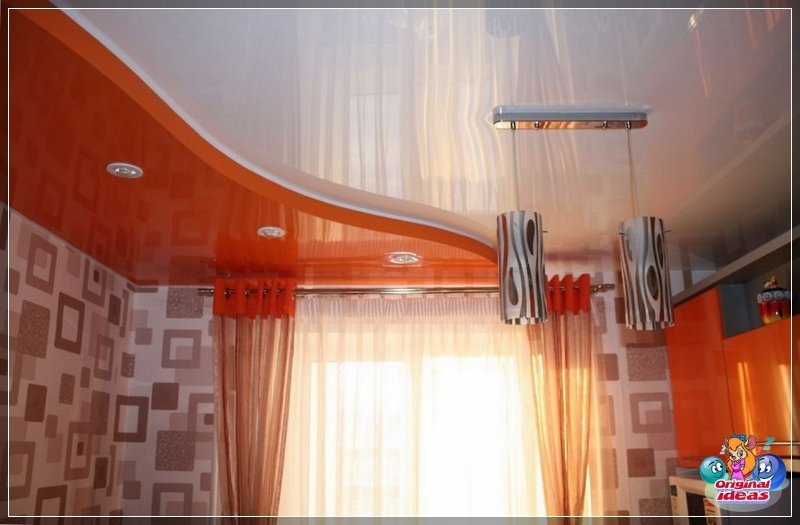

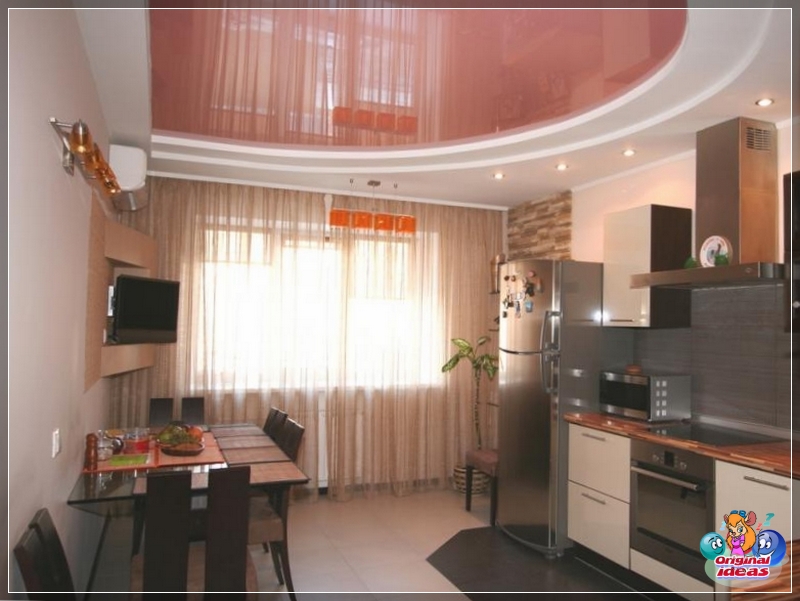
The main advantages of whitewashing: ease of do-it-yourself application, vapor permeability and breathable effect, matte surface. The method has a lot of disadvantages - the need for careful leveling of the surface, the impossibility of wet cleaning, low moisture resistance and resistance to temperature extremes. The whitewash has to be updated quite often, because. To. its rapid pollution occurs.
Painting
Another common economical finishing method is ceiling painting. Taking into account the kitchen conditions, you should use an alkyd or latex-based paint with increased moisture resistance. In principle, you can use water-based paint, but it will differ little from whitewashing. Using paints of different colors, you can create original compositions.
Main advantages: relatively low financial costs, ease of application, the possibility of wet cleaning. The paint forms a protective layer through which grease and dirt cannot penetrate. Disadvantages: the need for careful leveling of the surface, low durability. When water leaks from above, the paint peels off. Painted ceiling needs repair in 2-3 years.

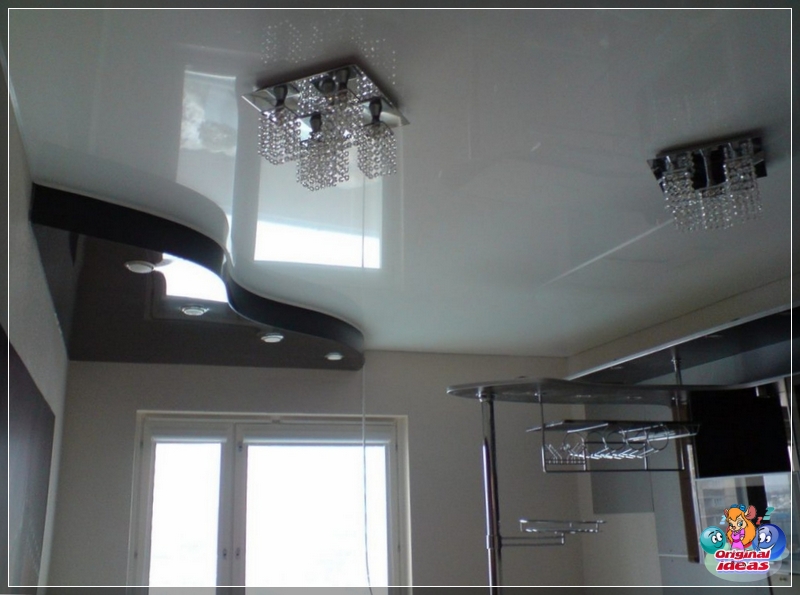






Plastic cladding
The ceiling in the kitchen can be faced with plastic. For this, expanded polystyrene tiles and panels from different types of plastic are used. One of the cheapest PVC panel options. It is undesirable to use embossed tiles for the kitchen ceiling, because. To. irregularities accumulate hard-to-clean fat and soot. Attached plastic cladding with glue or on special plastic profiles. In the first case, careful preparation of the surface is required, in the second, the requirements are somewhat reduced, which is facilitated by the presence of a small gap.
The main advantages of a plastic ceiling are ease of do-it-yourself installation, high water resistance, wet cleaning, low cost. Decorativeness is provided by imitation of various natural materials (stone, marble, wood, metal, etc.). NS.) and the possibility of a combination of colors. Cons - harmful emissions with significant heating, low resistance to bursting and scratching, fire hazard. In the process of aging, yellowness appears on the plastic.
Use of wood
Wood facing the ceiling is natural and related to nature.
The most popular is the rack ceiling. This is one of the options for a suspended structure. A frame made of aluminum profiles or wooden beams is attached to the ceiling, on which cladding made of wooden slats (lining) is mounted. One of the best materials is eurolining. In such cladding, ordinary pine ("economy category"), larch, oak, valuable wood species can be used.
Facing slats are impregnated with an antiseptic and covered with a special waterproof compound. When using a slatted ceiling, it should be borne in mind that it visually lowers the height of the room. The main advantages are vapor permeability, environmental friendliness, attractiveness, a special microclimate in the room. Disadvantages: tendency to rotting at high humidity, rather high cost, fire hazard.
Drywall application
The most common type of suspension system is a plasterboard ceiling.
Its main advantage is the possibility of finishing without leveling the surface of the ceiling, which is very important in the presence of large irregularities at the junction of floor slabs.
Drywall is a sheet material that has a flat, smooth surface, is easy to cut and install. A waterproof variety of material is used for the kitchen.
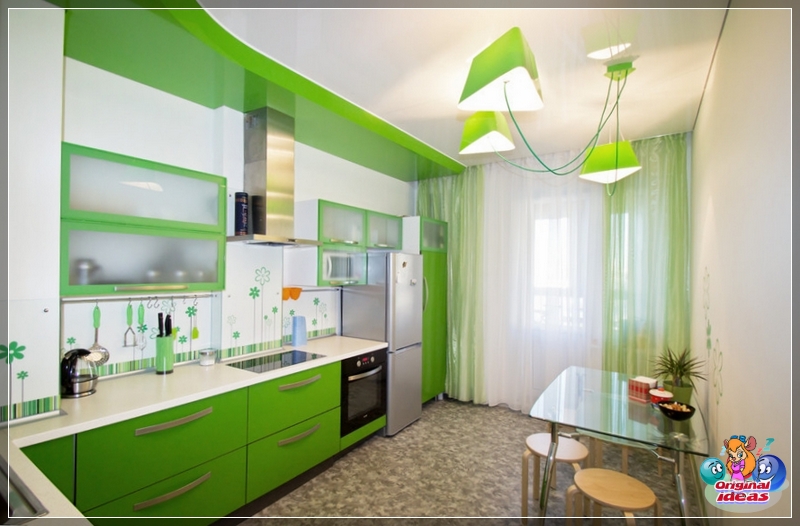

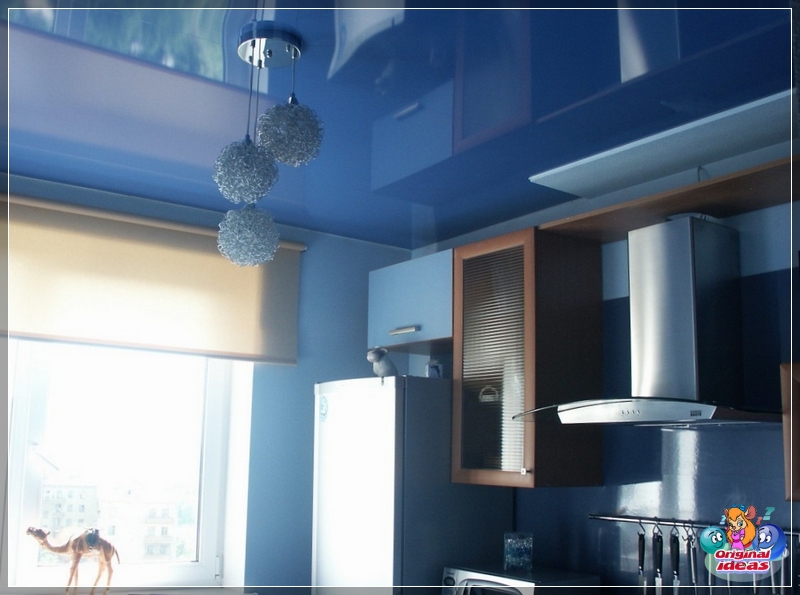
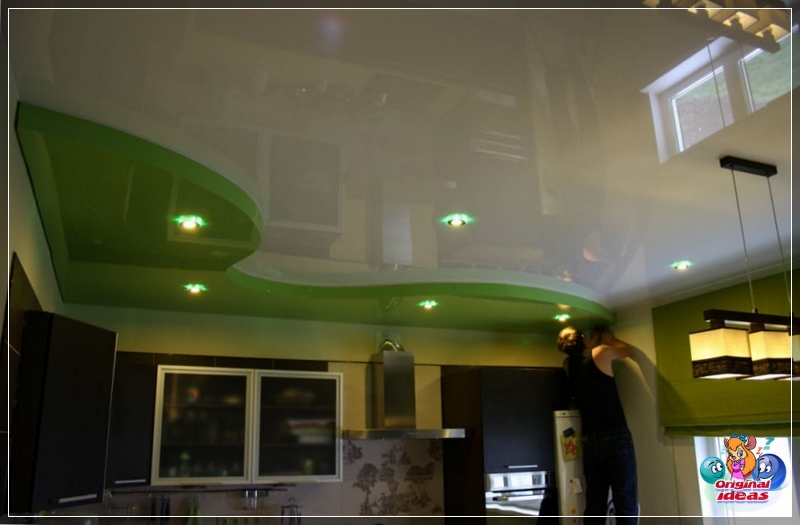
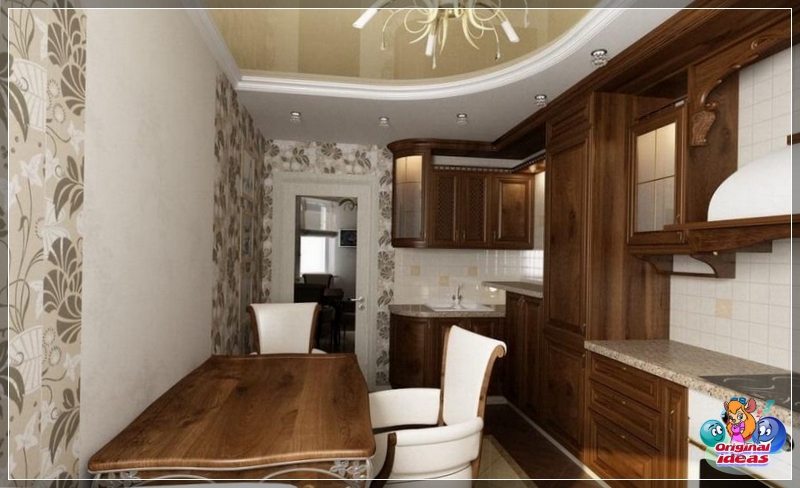
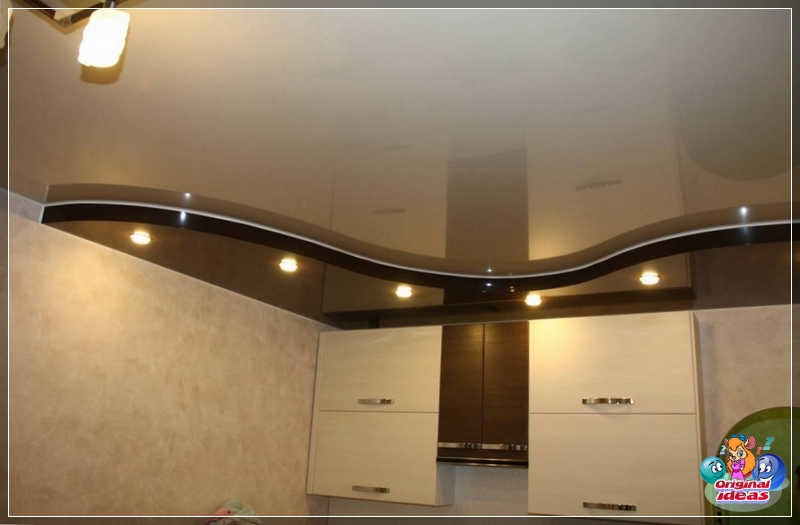
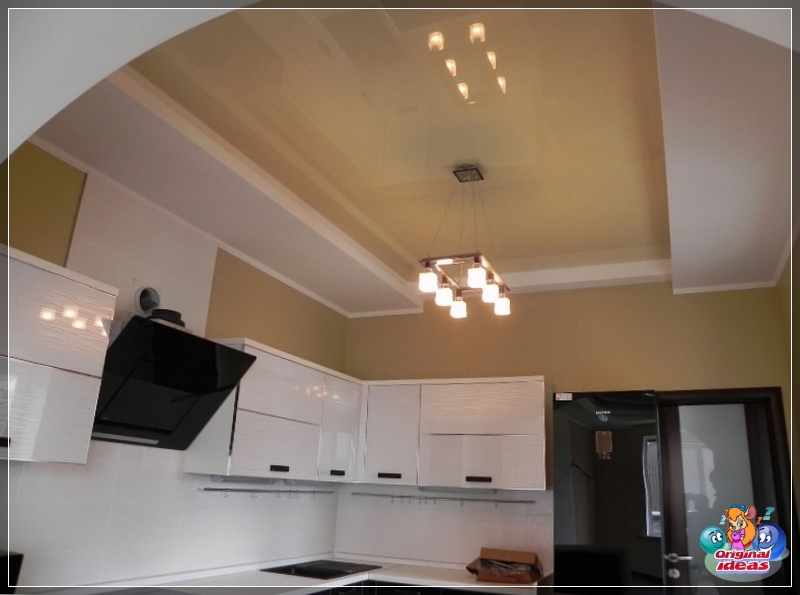
Such a suspended ceiling is made as follows. On the wall are mounted guides aluminum profiles. On the ceiling, a frame is assembled from U-shaped profiles, fixed on suspensions. Plasterboard sheets are fixed with self-tapping screws to the frame at a distance of 5-10 cm from the ceiling. After sealing and sanding the seams, a finish is provided by painting or wallpapering. Plasterboard can be used to form one- and two-level ceilings. The main disadvantage is a decrease in the real height of the kitchen.
Tension structures
Stretch ceiling is a modern approach to kitchen decoration. Its set includes: a baguette (frame), tension cloth, fasteners and decorative overlays. For small kitchens, a single-level stretch ceiling is most suitable. It is mounted in the following order. At a distance of 3-5 cm from the ceiling, a baguette made of special metal or plastic profiles is fixed to the wall. The edges of the web are pulled into its fasteners, and it is stretched until a horizontal surface is formed. The fabric can be made of PVC film or polyester, knitted fabric. In the first case, the web is stretched with heating the film up to 60 degrees, and in the second - without heating.
The ceiling decor is provided by the design of the canvas. When stretch ceilings are selected, the photo for the kitchen demonstrates the design possibilities. It can be one-color or two-color stretch (photo) canvases. The installation of two-level systems, which are used in large kitchens, is more complicated.
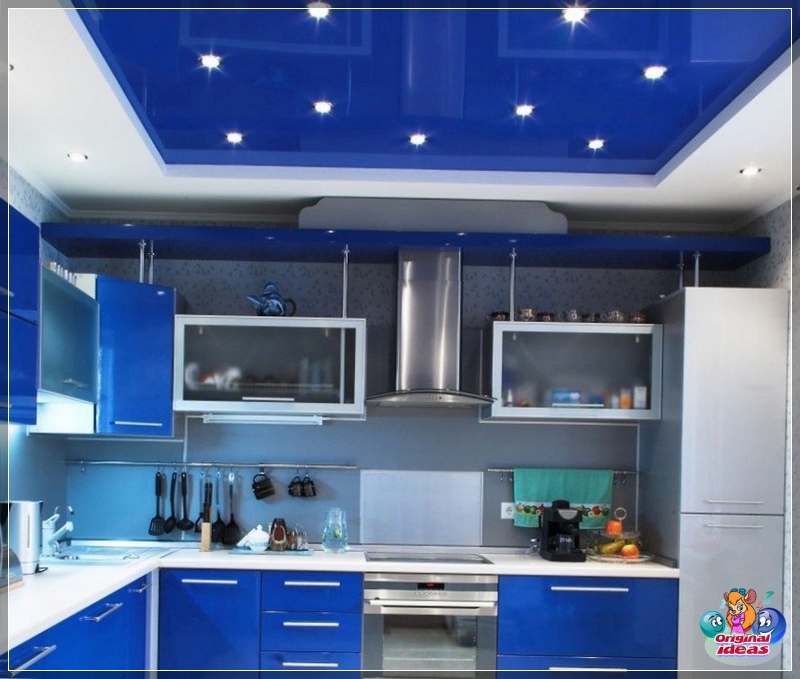
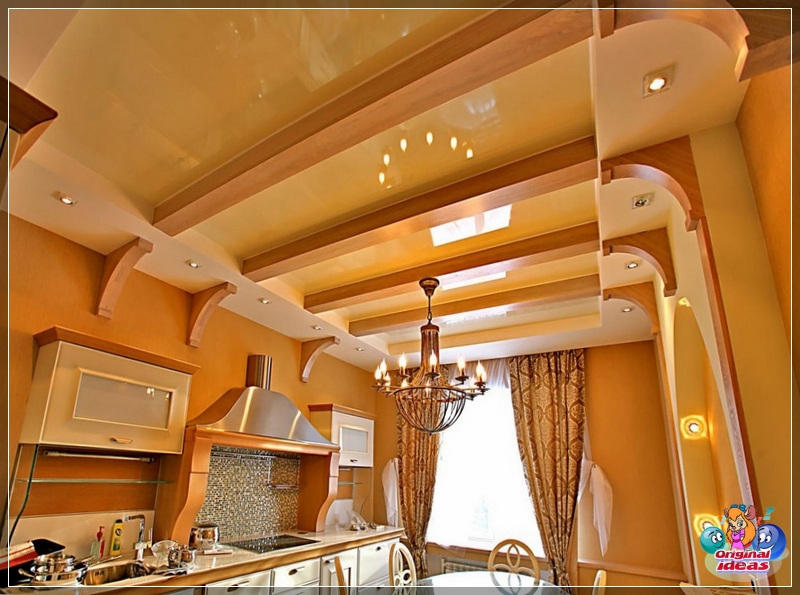
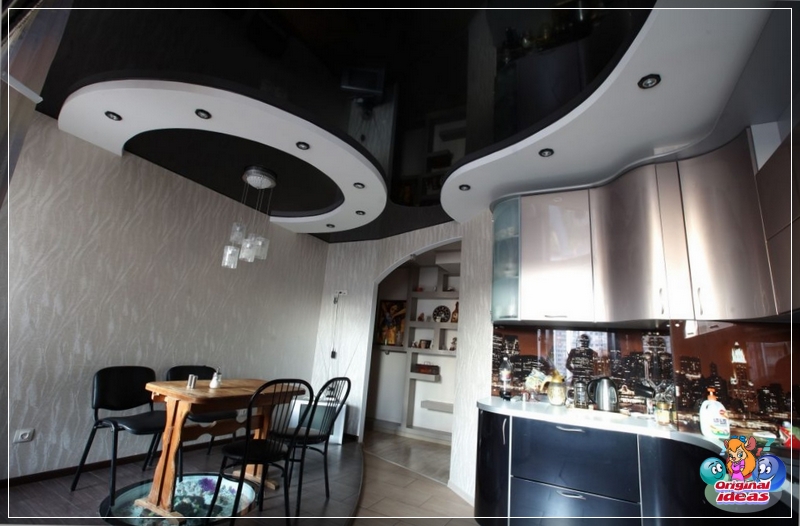
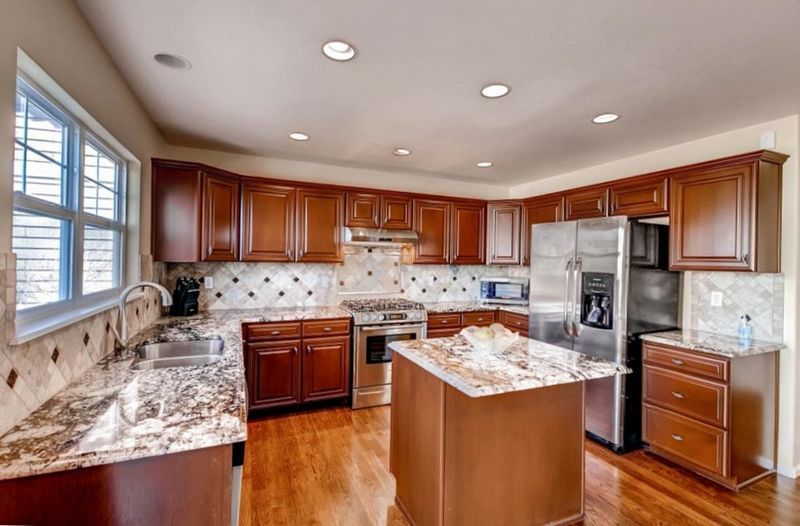

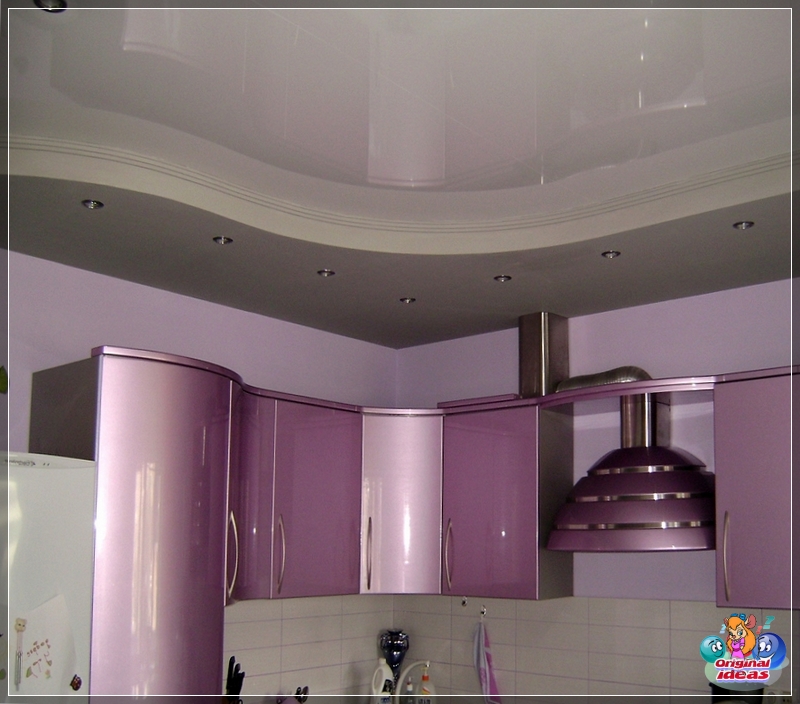


The kitchen ceiling is affected by many external factors. This is largely why finishing in this case requires a specific approach. There are different ways to solve the problem. The main thing is to take into account all the risks and provide a design that fits into the overall design of the space.